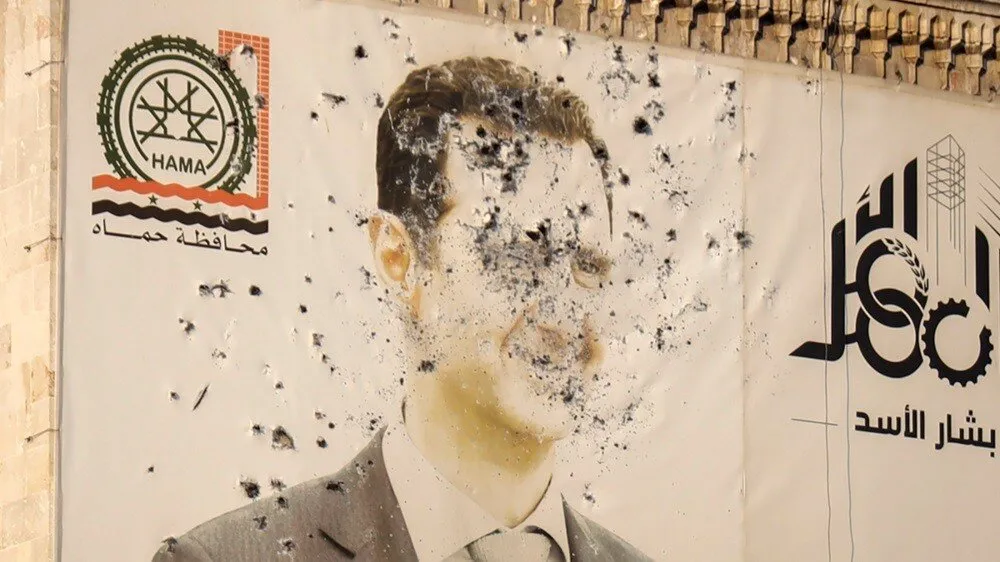July 31, 2013
by Abebe Gellaw
Exactly a year ago, ESAT (Ethiopian Satellite Television) declared the death of Meles Zenawi. That was the most important breaking news in the last two decades. TPLF went into frenzy to bury the news under a barrage of counter-propaganda. Bereket Simon went on ETV to curse ESAT and reassure the nation that the “great leader” would return intact. The propaganda chief and his foot soldiers had already kept the local media extremely busy with so many bizarre stories.
The zeal to bury the truth was too evident to miss. But the spin and misinformation campaign got out of control beyond anyone could have imagined. Addis Fortune, Addis Admas, Reporter, ETV, Walta…had all different versions of the same story. All of them said Meles was alive and kicking and was on his way back to his throne.
The lies were too fast to catch. Addis Admas, which has a bad habit of publishing fabrications, told us that Meles was working from the palace. Addis Fortune famously splashed its front page with a memorable headline: “Meles back in town.” But it was ESAT that accurately told the story that truly mattered. And then, Meles finally returned home in a coffin….It was a watershed moment for Ethiopia after the great demise of the late tyrant.
Frenzy attacks
After suffering for 21 years under the brutal grip and bouts of Meles Zenawi, Ethiopians had to witness a political melodrama. The plot was twisted, the lies were sinister, the propaganda was shameless and the mass hysteria, carefully planned for weeks, was one of the worst in the world. Ethiopians were told to come out and shed their tears to bury the “great leader” who was feeding them lies, kicking, torturing and killing their children and nephews with tyrannical ruthlessness.
As the lead investigator to verify the death of the despot, I was focused on a leak from the Brussels-based International Crisis Group (ICG). Despite conflicting rumors, it was the most compelling and verifiable information one could get about the death of the despot at St. Luc University Hospital in Brussels, Belgium.
A few hours after ESAT’s breaking news on July 30, 2012, I published the story online, which was deliberately titled, “Meles Zenawi is dead”. The TPLF camp launched more savage campaigns, death threats, defamation and saber rattling. Tigrai Online took the lead in the frenzy attacks.
‘Dilwonberu Nega’, a certain TPLF scribbler and apologist, doodled and scribbled a lengthy piece full of insults on Tigrai Online. “So Abebe “The foolish heart” and the gang of cowboy journalists at ESAT came up with a ‘brilliant’ idea of hoodwinking the international community by concocting a “Breaking News” on the “death of Prime Minister Meles Zenawi…. ESAT’s future, as a result of its totally irresponsible act of concocting the death of Prime Minister Melees Sinai, is now vulnerable to a quick and painful death as people who have been contributing money to ESAT are bound to ask a justifiable question: Are they or Ethiopia getting value for their money? The answer is a big NO.”
While the foolhardy TPLF and its puppets are still confused and depressed, ESAT and the movements for change are gaining ground and building momentum. TPLF is still unsure of its future one year after the demise of the captain of the ship destined for a tragic wreck.
ICG’s report, “Ethiopia after Meles”, was written in July 2012 but the release had to be delayed until the official announcement. After exhaustive planning, TPLF decided to reveal its top secret that it could no longer keep. It admitted that the tyrant was dead on August 20, 2012, over five weeks after his demise. ICG released its analytic report the next day. We were vindicated again.
Cracking pyramid
ICG warned that the one-man regime, without its creator, could be unraveling sooner rather than later. “For more than two decades, Prime Minister Meles Zenawi managed Ethiopia’s political, ethnic and religious divides and adroitly kept the TFPL and EPRDF factions under tight control by concentrating power, gradually closing political space and stifling any dissent. His death poses serious risks to the ruling party’s tenure,” the report said.
ICG’s prediction was on target that reflects the current reality. “Deprived of its epicenter [Meles], the regime will find it very difficult to create a new centre of gravity. In the short-term, a TPLF-dominated transition will produce a weaker regime that probably will have to rely increasingly on repression to manage growing unrest.”
Meles Zenawi was supposed to last longer. In a 2002 article, “Ethiopia Proves There Can Be Life after Death,” British journalist Jonathan Dimbleby had even quoted him as saying: “Africa’s downfall has always been the cult of the personality. And their names always seem to begin with M. We’ve had Mobutu and Mengistu and I’m not going to add Meles to the list.” Meles, who built a personality cult still in place, envied lifetime dictators and wanted to outlive Mugabe, Mengistu or Mubarak.
The Meles regime was built like a pyramid to serve him. He had created a monolithic power structure. On top of the highly corrupted ethno-power pyramid sat the emperor himself followed by his most trusted lieutenants. At the very bottom of the pyramid, the masses shouldered the whole brunt and weight of the top-down tyranny. It was a system designed to crush and oppress the multitude at the very bottom of the pyramid.
The man on top of the pyramid is no longer there. Now this system built to serve the strongman is cracking and unraveling slowly. The reasons are not complex. In reality, no one has replaced Meles Zenawi. No one has his power and privilege. No one has his skills to rule with brute decisiveness and Machiavellian tricks. Everyone assembled in the power structure is the tyrant’s loyalist. No one can hold the cracking pyramid as much as he did…. After all, Meles Zenawi was the supreme ruler, a kind of superglue that held together the complex ethno-political structure. Without the superglue, the pyramid cannot survive long enough.
Crown without sword
The pro-TPLF Ethiopian Reporter has recently admitted that Hailemariam Desalegn can only dream of succeeding Meles. It declared that the puppet has been given a crown without the sword. Just a few weeks into power, we were told that Hailemariam was only part of a new “collective leadership” scheme. He was awarded three deputies, two figure heads and a real one. The Reporter grievingly repeated what every ordinary citizen has been saying all along. Hailemariam the puppet is just a pawn in the game.
So how can the ship facing internal and external pressures navigate itself out of storm without wrecking itself? The regime may implode or even explode without applying Zenaw’s Machiavellian calculus that sustained it for over two decades. The trouble is only Meles could have done it cunningly. That is why they are vowing to keep his “visions” alive. His photos hanging all over the walls, the dead tyrant’s ghost is more powerful than Hailemariam and the rest of the gang called the “cabinet”.
The man poised to play Meles, Debretsion Gebremichael, TPLF’s spymaster and pseudo-intellectual, has more leverages than the three TPLF puppets, i.e. Hailemariam, Muktar Kedir and Demeke Mekonnen, added together. He is among the privileged and entitled TPLF ruling elite. The three have no power base and leverages. They are outsiders. Unlike Debretsion, and the other TPLF bigwigs moving the system from behind the curtains, they only serve as bellboys whose main duties are to create the illusion of diversity and a semblance of power sharing within EPRDF’s cheap ethnic goulash.
Debretsion is “Deputy” Prime Minister in charge of economy and finance. He is the Deputy Chairman of the TPLF. He is Minister of Information and Communication Technology. He is board chairman of the EthioTelecom and the Ethiopia Electric Power Corp., both plagued by unbridled corruption. Most importantly, he controls the security apparatus.
With a bogus PhD from a controversial online university called Capella, Debretsion has significant leverages of power. The security apparatus directly reports to him instead of the “Prime Minister.” And yet, he lacks the charisma and leadership skills needed to hold such a highly monolithic system that has not yet been reconstructed after the demise of its undisputed architect. Even if he is in charge of the telecommunication service, those who know well say that Debretsion doesn’t have telephone skills let alone speaking like a ruler. As a spymaster cunningly eavesdropping the secrets of the other game players, he is widely feared but not trusted.
Bereket Simon, who played a key role in organizing the mass hysteria and creating the illusion of the “great leader”, was widely believed to be one of the contenders for power. As the propaganda chief, he was practically the most visible face of the regime. In a surprising move, he was banished into oblivion with a ministerial position without portfolio. Bereket is now Hailemariam’s policy ‘adviser’, researcher and archivist. His lack of experience and expertise makes it apparent that he was just pushed to the backyard. Given the fact that Hailemariam the puppet has already special advisers well-trusted and liked by the TPLF, Bereket Simon will find it hard to fit into the army of advisers.
TPLF’s affairs
One of the worst case scenarios of a power struggle is that conspiracy becomes dangerously rife. The more conspiratorial the game players are, the more likely they tend to shoot at each other. So far the shootings are not out in the open but a sudden move by a player to dominate the rest can seriously disturb and unsettle the precarious regime still walking on eggshells. Whatever the case, the internal power struggle is mainly a TPLF affair. That doesn’t mean that the non-TPLFites would not be needed. Far from it, they are needed for the same purpose of diversity and loyalty to the major players.
Azeb Mesfin, the Amhara oddball in the TPLF, faces an uncertain future. Her power and privilege was totally based on her husband. Her recent bid to resurrect her fading clout by becoming the mayor of Addis Ababa failed miserably as she could not win the backing of TPLF’s kingmakers. TPLF’s ethnic business empire, EFFORT, is likely to slip out of her hand.
Although she seems to be determined to stay relevant, she is highly vulnerable. Many speculate that she could be surprised at some point with charges of corruption, a TPLF tactic used in times of great crises and power struggle. Her hope is pinned on the Meles Zenawi “foundation”. In her recent appearance on TV to talk about the bogus foundation and beg for money, it became apparent that she is becoming a lone wolf. She appeared incoherent, stressed-out and ill. All the symptoms are bad for the queen of Mega, mother of corruption—as some prefer to call her.
Sibehat Nega, TPLF’s veteran master of political intrigue, cannot be underestimated. After all, he mentored Meles Zenawi under his bosom. He still holds enormous political clout and continues to pull strings from behind…There is also a group that continues to complain from Mekele. Meles Zenawi’s successor and heir apparent, as chairman of the TPLF, was supposed to be Abay Woldu, the President of Region One (now renamed Tigray Regional State). His group feels s overshadowed by those positioned in and around Arat Kilo, especially his ‘deputy’ Debretsion. Unless Abay Woldu gets a means of coming closer to the seat of power in Addis, he will remain a regional warlord with no credible leverage to lead TPLF’s domination on the rest of the nation.
The sleeping giant waking up
Slowly but surely the sleeping giant is waking up. The opposition is regrouping again. Dissidents are breaking the shackles of fear. For the first time after the tragedy of the 2005 crackdowns, Semayawi Party and UDJ are coming out with stronger and bolder messages.
There seems to be a healthy competition to make an impact and build a movement for change. Muslims Ethiopians continue to march for equality condemning TPLF’s tyranny at least everyFriday. ESAT is providing a critical voice and filling the void in the airwaves of Ethiopia. There is no more silence and fear in Ethiopia. The voices of freedom are getting louder and bolder. And yet collaboration, more than competition, is still needed among all stakeholders.
Ethiopia remains restless and unpredictable. The opportunities that opposition groups need to seize on are too many. The missing link is visionary leadership with smart strategies….Opposition groups need to reinvent themselves and correct their mistakes and failures.
Whatever the case, change is on the horizon. The cracking pyramid left by tyrant cannot change withstand the internal and external pressures that can wreck it into pieces….The opportunities after the great demise of the tyrant are too many to count.
There are still some that expect the system to rot and fall down by itself. There are even those that wait for change to come from above. That is not the kind change Ethiopia needs. The revolution must be created and smartly dictated by those who are struggling to transform Ethiopia for the better.
Those who are saying that nothing has changed may not have good eyes for details. As Che Guevera said, “The revolution is not an apple that falls when it is ripe. You have to make it fall.” The regime is weak and divided. The socio-economic and political conditions, still dominated by the TPLF, provide fertile ground for a revolution. Divisions and bickering are still the major problems that revolutionaries and change-makers of Ethiopia must overcome to seize the moment….
As it is always the case, change is constant and inevitable. “When dictatorship is a fact, revolution becomes a right,” Victor Hugo once said. Nobody should wait for a revolution. With the right mindset, we are the ones who can make a revolution our destiny.
The Egyptian revolutionary Waem Ghonim is right: The power of the people is greater than the people in power. The demise of Meles was only the beginning of the end to TPLF’s apartheid system. Ethiopia’s next revolution is inevitable as long as the people realize their real power and unleash it against TPLF’s tyranny, inequality, discrimination and injustice















